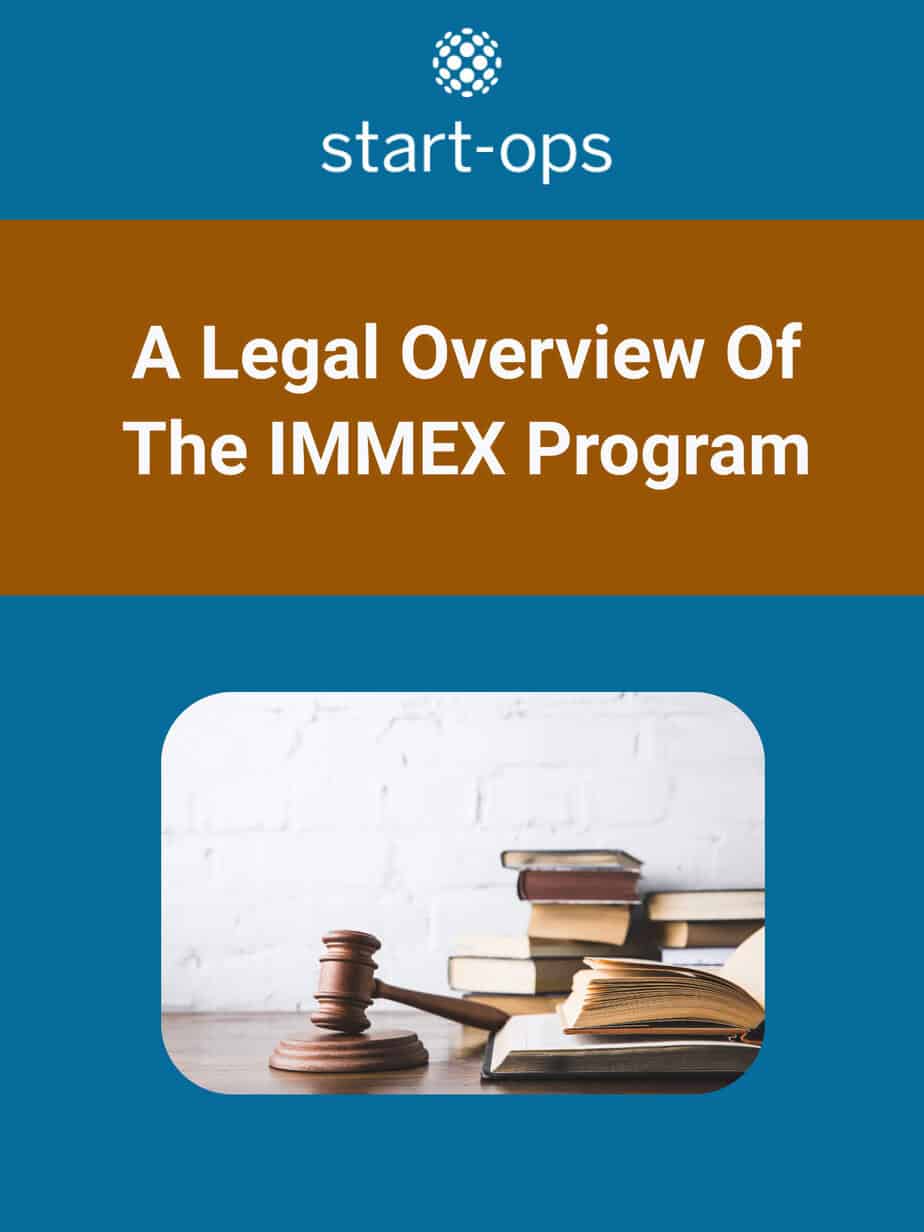
What happens when a successful IMMEX company identifies a lucrative opportunity to sell its products within Mexico’s growing domestic market? This is where the limitations of relying solely on IMMEX become apparent, and where a more sophisticated strategy is required.
By strategically combining the IMMEX program with a second, parallel program—the Program for Sectoral Promotion (PROSEC Mexico)—companies can create a comprehensive tariff optimization structure. This dual approach allows for maximum cost reduction on imported components, regardless of whether the final product is destined for export or for domestic sale. This guide explains how these two programs work, their powerful synergy, and the strategic considerations for implementation, with direct references to the governing decrees.
Understanding the Core Function and Limits of IMMEX
The IMMEX (Manufacturing, Maquila, and Export Service Industry) program, whose objective is outlined in Article 1 of the IMMEX Decree, is fundamentally an export promotion tool. Its primary benefit is the deferral of the General Import Tax (IGI)—the import duty or tariff—and a credit on Value-Added Tax (VAT) for temporarily imported goods. This arrangement is contingent on one critical condition: the imported materials must be processed and subsequently exported from Mexico within the timeframes established in Article 4 of the IMMEX Decree.
The challenge arises when an IMMEX company decides to sell a product domestically. To do this, the temporarily imported components used in that product must have their customs status changed from “temporary” to “definitive.” At the moment of this change, the deferred General Import Tax (IGI) becomes due. The company must pay the standard tariff on those components, which can be substantial and can make the final product uncompetitive in the local market. This is the precise problem that PROSEC is designed to solve.
Introducing the PROSEC Mexico Program
The Program for Sectoral Promotion (Programas de Promoción Sectorial, or PROSEC Mexico) is a separate trade incentive program administered by Mexico’s Secretariat of Economy. Unlike IMMEX, which is focused on the destination of the final product, the objective of PROSEC Mexico, as stated in Article 1 of the PROSEC Decree, is to strengthen specific, strategic industrial sectors within Mexico.
Its purpose is to make domestic industries more competitive by allowing registered companies to import a specific list of raw materials, components, and machinery at a preferential tariff rate, typically ranging from 0% to 5%. This preferential rate, defined in Article 5 of the PROSEC Decree, applies to definitive imports—goods intended for use in production within Mexico—regardless of their country of origin.
PROSEC is structured around the 24 key industrial sectors listed in Article 3 of the PROSEC Decree, including:
- Electronics
- Automotive and Auto Parts
- Aerospace
- Textiles and Apparel
- Plastics and Rubber
- Furniture
- Toys
- Footwear
- Capital Goods
A company must be registered within a specific PROSEC Mexico sector to gain its benefits, and the preferential tariff only applies to the specific list of Harmonized System (HS) tariff codes published for that sector.
The Synergy: How IMMEX and PROSEC Mexico Work Together
The true power of this strategy is unlocked when an IMMEX-certified company also obtains a PROSEC Mexico registration for its industrial sector. This combination provides flexibility and comprehensive tariff reduction for a hybrid sales model.
Here’s how the synergy works in practice:
- Initial Import Under IMMEX: A company imports components from a country that does not have a free trade agreement with Mexico (e.g., China, Vietnam, Taiwan). These components have a standard Most-Favored Nation (MFN) tariff rate—let’s say 15%. Under its IMMEX program, the payment of this 15% tariff is deferred.
- Production: The company uses these components in its manufacturing process.
- Diverting for Domestic Sale: The company decides to sell a portion of the finished products to a customer within Mexico.
- Change of Customs Regime: To make the domestic sale legal, the company must change the customs status of the corresponding components from temporary (IMMEX) to definitive.
- Invoking PROSEC for Tariff Reduction: At the moment of this regime change, the 15% deferred tariff becomes due. However, because the company is also registered in the PROSEC program (for example, the Electronics sector), it can invoke its PROSEC benefits. If the imported component is listed in the decree with a preferential tariff of 0%, the company will pay 0% IGI instead of the standard 15%.
This is a direct, hard-dollar saving that makes selling to the domestic market significantly more profitable. Without PROSEC Mexico, the 15% tariff would have to be paid, potentially erasing the profit margin on the domestic sale. This combination effectively allows a company to decide the final destination of its products after production, with a cost-optimized structure in place for any scenario.
Application and Compliance Requirements
Obtaining a PROSEC registration is a separate process from the IMMEX application and is also managed through the VUCEM single-window portal. The specific requirements for applicants are detailed in legal frameworks such as Article 11 of the IMMEX Decree for IMMEX and Article 6 of the PROSEC Decree
Key requirements for a PROSEC Mexico application include:
- Demonstrating that the company’s production activities fall squarely within one of the 24 defined PROSEC Mexico sectors.
- Providing a detailed list of the specific goods to be produced under the program.
- Providing a list of the specific components and raw materials (by tariff code) that will be imported and used in that production.
Compliance requires meticulous inventory management. The company’s Annex 24 system must be sophisticated enough to track which imported components are used in products that are ultimately exported (discharged under standard IMMEX rules) versus those used in products sold domestically (discharged via a regime change invoking PROSEC).
Strategic Considerations and Limitations
While powerful, this dual-program strategy has important considerations:
- Sector and Product Specific: The benefits of PROSEC are strictly limited to the goods listed for a specific sector in the decree. If a component is not on the official list, the standard MFN tariff must be paid upon domestic sale.
- Administrative Overhead: Managing both programs requires a high level of trade compliance expertise and robust inventory control systems to ensure accurate tracking and reporting to the SAT.
- Not a Substitute for FTAs: The benefits of PROSEC Mexico do not replace the benefits of free trade agreements like the USMCA. For components originating in the US or Canada that meet the rules of origin, the tariff is already 0% under the USMCA. PROSEC is most valuable for components sourced from countries without a Mexican FTA.
Conclusion
While the IMMEX program is the essential foundation for export manufacturing in Mexico, it is not a complete solution for companies with ambitions in the domestic market. The PROSEC Mexico program fills this critical gap. By thoughtfully combining IMMEX and PROSEC, manufacturers can build a resilient and highly efficient tariff management structure. This advanced strategy enables maximum cost savings on imported inputs, providing the flexibility to compete aggressively in both the global export arena and Mexico’s dynamic internal market, thereby achieving true operational and financial optimization.


